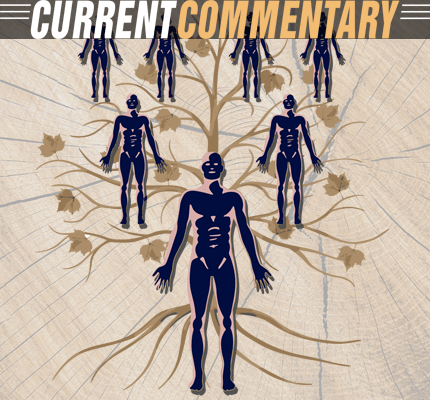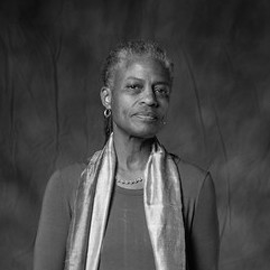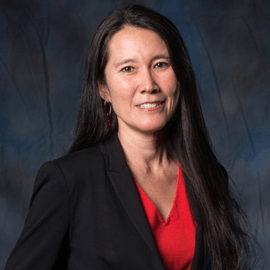
Questioning Race
By Anita Foeman, Ph.D., and Bessie Lawton, Ph.D.
What are you and where are you from?
These questions are at the core of the tremendous popularity of personal ancestry DNA tests. The implications of this new science are profound, leading us to rethink the idea of race itself. The Communication discipline provides a framework for understanding the ways that we construct identity and the impact of challenges to it. Communication theorist Walter Fisher tells us that humans are “essentially storytellers,” and that the power of a narrative, even one that has caused discord, is hard to disrupt.
In research spanning more than a decade, the DNA Discussion Project has led the conversation in tackling these oftentimes inconsistent biological and narrative constructs. In a paper that is part of ongoing research, Foeman, Lawton, and Rieger explored how product users respond to ancestry DNA profiles, especially when the results are unexpected. The authors ask:
Do ancestry profiles change people’s racial narrative?
Do findings lead people to change social behaviors?
Do individuals from different groups react differently?
From ongoing research with university students and more recently with a somewhat broader population, the answers are starting to come into focus. First, and not altogether surprising, people do not automatically change their racial identifications based on DNA findings. They do begin to articulate the differences among race, culture, and ethnicity in identification, which broadens the conversation in and of itself. Many respondents essentially say that they don’t care what their test says; they are sticking with their story regardless. “This is my culture,” is a common reaction. Others question the lab test. In both cases, people feel wedded to the narrative with which they have grown comfortable, and new “proof” can be resisted.
Of course, there are those who do adopt a new storyline, either because they like the new story better than their known origin story or because they are faced with overwhelming evidence. In these cases, some experience pushback from others or even disruption to the family network. Reactions to association with stigmatized groups have been explored by Communication scholar Scranton (2014), who found that responses to stigma around the question, “What are you?” range from confronting, deflecting, or internalizing, to giving no response at all. Finding that one is part of a stigmatized group can be both traumatic and ripe with opportunity for learning and a reboot of traditional views of race.
In terms of whether people change their behaviors in response to DNA results, we find that many users, even those who do not plan to change their primary narrative, say that they will share their DNA profiles (usually presented in a pie chart format) with others, often on social media. Most people do add this story to their narrative in some way, and most are excited to share the experience. Many say that they will change behaviors including everything from doing family research, to visiting cultural locations. Some, although a minority, plan to change their Census designations. Given these “concessions” to the test, big and small, the authors question whether, over time, new perceptions of race will emerge. For example, these attitudes represent a shift in the family narratives that are passed on from generation to generation, potentially changing the way entire families talk about race. There is evidence of this already being the case.
The authors also found that people do tend to respond differently based on their group affiliation. Europeans are most likely to think they have only one ancestry in their backgrounds. Both Europeans and African Americans overestimate Native American ancestry, and express similar narratives about a woman with “a long dark braid.” Those who do not identify as only European or White show more openness and fluidity than European/Whites in incorporating genetic ancestry results into how they identify. Gender and age differences also are factors. Females tend to be more receptive to unexpected DNA results and express that they are more likely to do something with the information. Males are more likely than females to say that they will “change nothing” based on the test results. This is consistent with our earlier research on interracial couples, in which the authors found that White women were as likely as women of color to advocate for their children of color. Over time, they even begin to think of themselves as “honorary members” of the minority group, leading the authors to conclude that for some women, the mother identity can shape a racial identity. Finally, younger people tend to be more likely to react positively to results that reveal a greater variety in their profile than expected.
Because people often respond emotionally to findings, with reactions ranging from “shock” to “excitement,” we have looked to Communication scholars in the area of genetic counseling to help us process results with participants both individually and in groups. Gaff & Bylund (2010) help frame the discussion for safe strategies in exploring family health genetics. This work applies to the discussion of ancestry genetics as well. Gaff & Bylund note that people must learn to live with ambiguity about genetic tests, and that ambiguity about race may be a key outcome of ancestry testing. Gaff and Bylund also stress the importance of communicating that these tests have implications for people beyond the individual, so learning the best way to share findings may need to be considered.
In the Reciprocal Engagement Model (REM) articulated by McCarthy, Bartels, & LeRoy (2007), the scholars argue that people working on exploring genetic information with those tested should keep in mind that 1) more information is better than less information; 2) creating an open and honest relationship in the contact setting is vital; 3) demonstrating respect for the autonomy of the recipient of the information, and allowing the recipient to direct how to manage information are key considerations; (4) the facilitator should assume the resiliency of the recipient and give them freedom to reflect; and (5) it is critical to assume that emotions matter as part of the core process.
Ancestry DNA data continue to become more complex and sophisticated. Of late, people have the option to download raw data so that they can compare results that are given by various labs, based on each lab’s unique tests. This essentially allows people to have several options (generally similar) in what new profile to accept. As the country becomes blanketed with this new information, one goal is to begin to think about new narratives of race that are compelling, culturally honest, and beneficial. Fisher says life is “a process of continual re-creation”. The discipline of Communication is in a position to provide leadership in this process, as genetic ancestry information plays an increasingly larger role in the creation and re-creation of human identity.
References
- Fisher, W. (1989). Human communication as narration: Toward a philosophy of reason, value, and action. Columbia, SC: University of South Carolina Press.
- Foeman, A., Lawton, B., & Rieger, R. (2014). Questioning race: Ancestry DNA and dialog on race. Communication Monographs. DOI: 10.1080/03637751.2014.972966
- Gaff, C., & Bylund, C. L. (Eds.). (2010). Family communication about genetics: Theory and practice. New York, NY: Oxford University Press.
- McCarthy, V. P., Bartels, D. M., & LeRoy, B. S. (2007). Coming full circle: A reciprocal-engagement model of genetic counseling practice. Journal of Genetic Counseling, 16, 713–728. doi:10.1007/s10897-007-9113-4
- Lawton, B., Foeman, A., & Braz, M. (2012). Interracial couples’ conflict styles on educational issues. Journal of Intercultural Communication Research, DOI:10.1080/17475759.2012.711766
- Scranton, A. (2014). How multiracial people manage messages of stigma: A qualitative research study. Iowa Journal of Communication, 46(2), 225–245.



